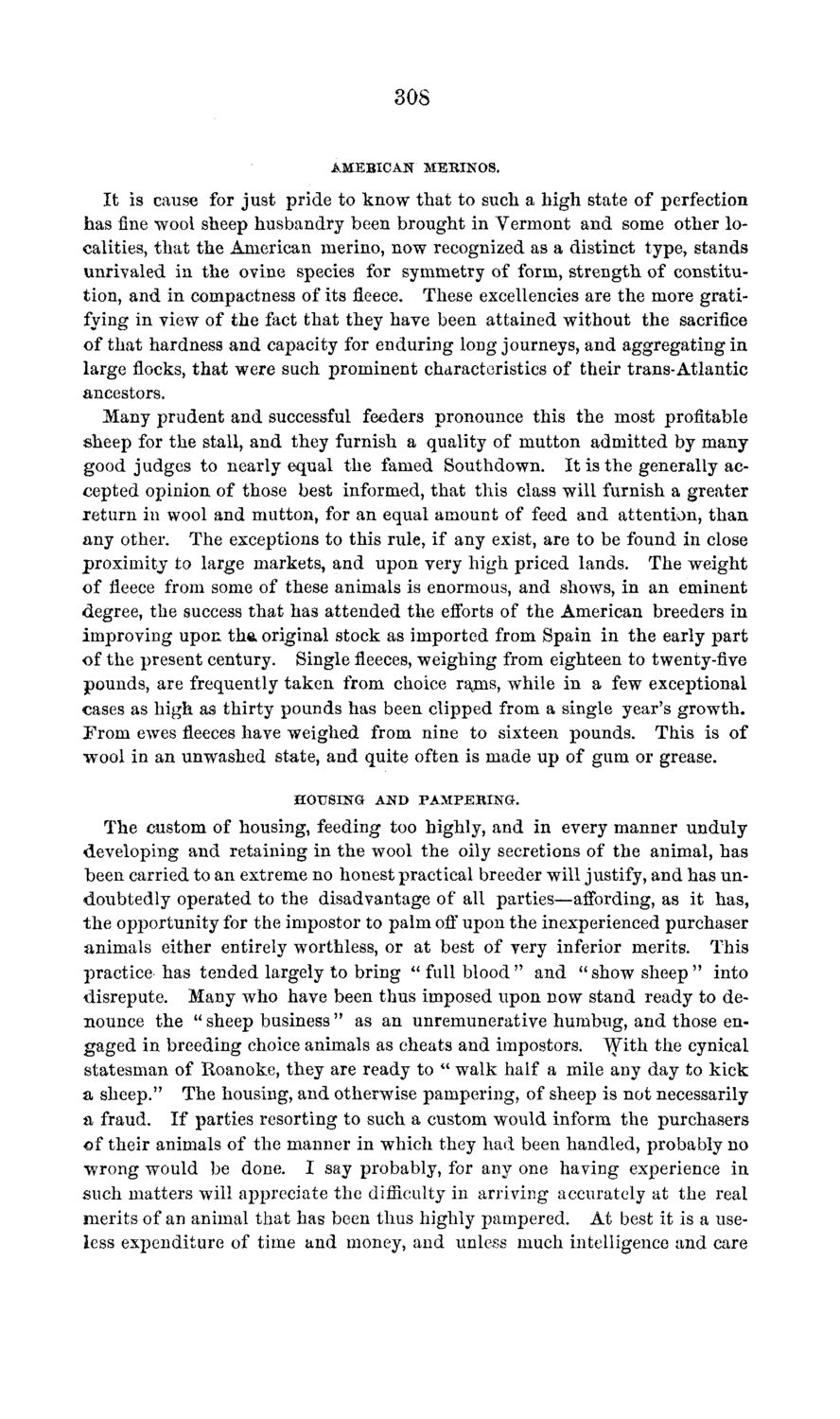| |
| |
Caption: Board of Trustees Minutes - 1869
This is a reduced-resolution page image for fast online browsing.

EXTRACTED TEXT FROM PAGE:
308 AMEBIC AN M E R I N O S . It is cause for just pride to know that to such a high state of perfection has fine wool sheep husbandry been brought in Vermont and some other localities, that the American merino, now recognized as a distinct type, stands unrivaled in the ovine species for symmetry of form, strength of constitution, and in compactness of its fleece. These excellencies are the more gratifying in view of the fact that they have been attained without the sacrifice of that hardness and capacity for enduring long journeys, and aggregating in large flocks, that were such prominent characteristics of their trans-Atlantic ancestors. Many prudent and successful feeders pronounce this the most profitable sheep for the stall, and they furnish a quality of mutton admitted by many good judges to nearly equal the famed Southdown. It is the generally accepted opinion of those best informed, that this class will furnish a greater return in wool and mutton, for an equal amount of feed and attention, than any other. The exceptions to this rule, if any exist, are to be found in close proximity to large markets, and upon very high priced lands. The weight of fleece from some of these animals is enormous, and showrs, in an eminent degree, the success that has attended the efforts of the American breeders in improving upon tha original stock as imported from Spain in the early part of the present century. Singlefleeces,weighing from eighteen to twenty-five pounds, are frequently taken from choice rajms, while in a few exceptional cases as high as thirty pounds has been clipped from a single year's growth. Prom ewes fleeces have weighed from nine to sixteen pounds. This is of wool in an unwashed state, and quite often is made up of gum or grease. HOUSING AND PAMPERING. The custom of housing, feeding too highly, and in every manner unduly developing and retaining in the wool the oily secretions of the animal, has been carried to an extreme no honest practical breeder will justify, and has undoubtedly operated to the disadvantage of all parties—affording, as it has, the opportunity for the impostor to palm off upon the inexperienced purchaser animals either entirely worthless, or at best of very inferior merits. This practice has tended largely to bring " full blood " and " show sheep " into disrepute. Many who have been thus imposed upon now stand ready to denounce the " sheep business " as an unremunerative humbug, and those engaged in breeding choice animals as cheats and impostors. With the cynical statesman of Roanoke, they are ready to " walk half a mile any day to kick a sheep." The housing, and otherwise pampering, of sheep is not necessarily a fraud. If parties resorting to such a custom would inform the purchasers of their animals of the manner in which they had been handled, probably no wrong would be done. I say probably, for any one having experience in such matters will appreciate the difficulty in arriving accurately at the real merits of an animal that has been thus highly pampered. At best it is a useless expenditure of time and money, and unless much intelligence and care
| |